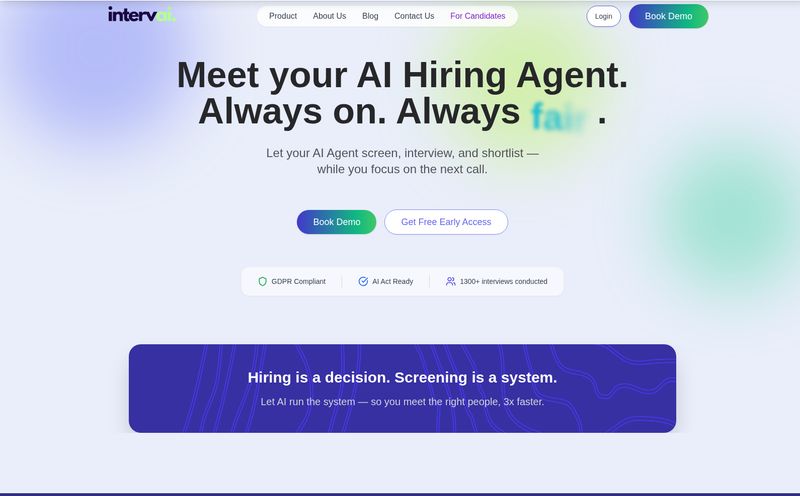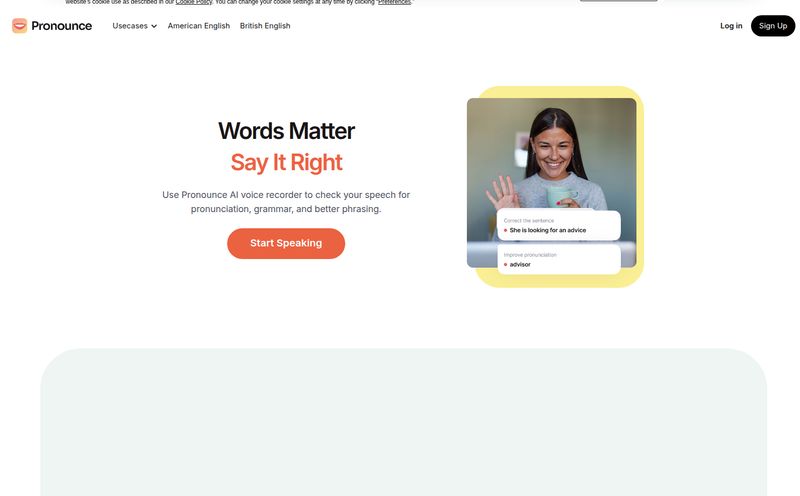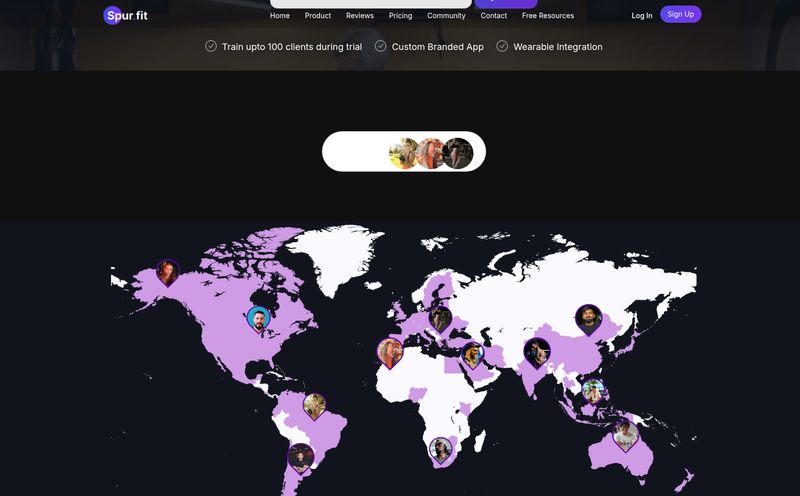I’ve been in the sales and marketing game for a long time. Long enough to remember when “data-driven” meant spending a full Monday morning exporting clunky reports from your CRM, dumping them into Excel, and trying to build pivot tables that didn't crash your computer. We’d stare at walls of numbers, trying to divine some hidden truth. Who’s performing? Who’s sandbagging? Why did last quarter’s pipeline look amazing but result in… crickets?
It was, to put it mildly, a massive pain. We were drowning in data but thirsty for actual insights. Sound familiar?
Today, the buzz is all about AI. It promises to sift through that same mountain of data and just… tell us the answers. But let's be real, a lot of “AI tools” are just fancy dashboards with a new coat of paint. That's why when I come across a platform like Atrium, which focuses on management automation and coaching, my ears perk up. It’s not just showing you data; it claims to tell you what to do with it. But does it deliver?
What Exactly is Atrium, Anyway?
Let's get this out of the way: Atrium isn't just another analytics dashboard. I think of it more like an automated layer of management that sits on top of your CRM. It’s designed specifically for sales leaders—the VPs, Directors, and front-line managers of AE, SDR, and CS teams—who are tired of flying blind.
The core idea is to automate the diagnosis of your team's performance. Instead of you, the manager, spending hours hunting for clues as to why a rep is falling behind, Atrium is built to raise its hand and say, “Hey, look over here! Rep Bob’s meeting count is down 25% this month, and his new pipeline creation has stalled. You should talk to him.”
It's a proactive system for people who have more direct reports than they have hours in the day. It’s a co-pilot, constantly scanning the instruments and pointing out what needs your immediate attention, so you can focus on the human part: coaching, strategy, and closing big deals.

Visit Atrium
The Magic Behind the Curtain: Atrium's Core Features
So how does it do all this? It’s not just smoke and mirrors. The platform is built around a few key functions that work together to create a cohesive management system.
AI-Powered Coaching That Actually… Coaches
“AI Coaching” is a term that gets thrown around a lot. In Atrium’s world, it means turning raw performance data into a specific conversation starter. The system tracks dozens of metrics for each rep—everything from the number of first meetings and pipeline ownership to sales cycle length and close rates. It then uses this data to automatically flag anomalies and trends. For instance, it can spot if a new hire is ramping up slower than their peers or if a veteran rep’s activity has suddenly dropped off. This frees the manager from being a data detective and lets them be a coach.
Aligning the Troops with a Standardized Playbook
One of the biggest challenges in any large sales org is consistency. Your A-players crush it, but how do you get your B-players to adopt the same winning habits? Atrium helps by making your sales playbook measurable. By tracking the key activities and outcomes that define success at your company, it establishes a clear, data-backed standard. It moves the conversation from “You need to do more” to “Successful reps on our team average 10 new meetings a week; you’re at 4. Let’s figure out why.” It's about creating a culture of accountability around a shared definition of what good looks like.
From Data Overload to Actionable Insights
This is probably my favorite part. Most leaders I know are swimming in Salesforce reports and BI dashboards. They have the what (sales are down), but not the why. Atrium aims to connect the dots. It shows how leading indicators (like prospecting activity) directly influence lagging indicators (like revenue). Seeing that a dip in SDR-sourced meetings in January directly led to a pipeline gap in March is a powerful insight. It helps you manage the future, not just report on the past. This is the difference between descriptive analytics (what happened) and diagnostic analytics (why it happened).
Who is Atrium Really For? (And Who Should Pass)
Okay, let's get down to brass tacks. This tool isn't for everyone, and they're pretty upfront about it. I actually respect the clarity. There's nothing worse than a tool that claims to be a perfect fit for every single business on earth.
The Salesforce Imperative
This is the big one. You have to be a Salesforce shop to use Atrium. No exceptions. If your team lives in HubSpot, Zoho, or another CRM, you can stop reading now. This isn't a knock; it’s a strategic choice. By focusing exclusively on the Salesforce ecosystem, Atrium can build deeper, more reliable integrations than a tool that tries to support every CRM under the sun.
Size Matters: Built for Larger GTM Teams
Atrium suggests it's best suited for go-to-market (GTM) teams with more than 25 people. Why? Because its statistical models and peer-to-peer comparisons need a certain amount of data to be meaningful. If you have a 3-person sales team, you don't need an AI to tell you who is underperforming—you already know. But when you have 50, 100, or 500 reps, spotting individual performance issues and systemic trends becomes impossible without a tool like this.
The Target User: Directors, VPs, and RevOps
While front-line managers are the primary daily users, the platform is designed with a strategic, top-down view in mind. It's for the leaders responsible for the entire revenue engine—the CROs, VPs of Sales, and Revenue Operations professionals who need to see the whole picture and ensure their managers are coaching effectively and consistently.
The Real-World Impact: What Can You Expect?
So, you fit the profile. What's the payoff? Based on its features, the goal is to drive tangible improvements in core sales metrics. We're talking about increasing rep attainment by giving managers the specific insights they need to coach effectively. It’s about accelerating pipeline velocity by identifying and clearing bottlenecks early in the sales process. I once worked with a company where a single stage in their sales process was a black hole; deals went in and never came out. A tool like Atrium would have flagged that in weeks, not quarters.
Ultimately, it’s about making your sales forecast more predictable and reliable. By ensuring the top of the funnel is healthy and reps are operating consistently, you create a more stable revenue machine.
Let's Talk Turkey: Atrium Pricing
And now, the question on everyone's mind: how much does it cost? If you're looking for a pricing page with neat little tiers, you'll be disappointed. There isn't one. Which, honestly, is completely standard for enterprise-grade SaaS focused on larger teams.
Pricing is almost certainly customized based on the number of users (or reps being monitored), the specific modules you need, and your overall contract. To get a number, you'll need to do what the button on their site says: Book a demo. I know, I know, some people hate this. But I see it as a good filter. It ensures you’re talking to a qualified person who can understand your specific needs before they throw a price at you. It saves everyone time in the long run.
My Final Take: Is Atrium Worth the Hype?
Here's my two cents. Atrium is an opinionated piece of software. It’s not a blank canvas like Tableau where you have to build everything from scratch. It comes with a built-in philosophy about how sales teams should be managed, measured and coached. If that philosophy aligns with yours, it could be incredibly powerful.
If you are a director or VP at a company with 50+ reps on Salesforce, and you feel like you're constantly fighting fires and struggling to enforce a consistent management process, then Atrium should absolutely be on your shortlist. It’s built to solve your exact problems.
If you're a 10-person startup on HubSpot, this is overkill. It's the wrong tool for the job. And that's okay!
In a world overflowing with data, tools that provide clarity are worth their weight in gold. Atrium appears to be digging in the right place, offering not just data, but direction. And for a busy sales leader, that might be just the magic they're looking for.
Frequently Asked Questions About Atrium
- What CRM does Atrium require?
- Atrium exclusively integrates with Salesforce. If you do not use Salesforce as your primary CRM, the platform will not work for your organization.
- Is Atrium a good tool for small sales teams?
- Not really. Atrium is designed for larger go-to-market teams, typically with 25 or more members. Its data analysis and peer-to-peer benchmarking are most effective at this scale.
- How does Atrium's AI coaching actually work?
- It works by automatically tracking dozens of performance metrics for each rep, identifying statistical anomalies or deviations from the norm, and then alerting managers with specific, data-backed talking points for their one-on-one meetings.
- Can individual sales reps use Atrium?
- While reps can see their own data, Atrium is primarily a management tool. It's built for Sales Managers, Directors, VPs, and RevOps leaders to monitor and improve team-wide performance.
- How is Atrium different from a BI tool like Tableau or Power BI?
- BI tools are descriptive; they are flexible platforms that let you build any report you can imagine, but you have to know what to look for. Atrium is prescriptive; it comes with a pre-built data model and logic designed to automatically surface the most important sales performance insights for you.
- How can I find out how much Atrium costs?
- Atrium uses a custom pricing model. To get a quote for your team, you need to contact their sales team and book a demonstration through their website.



